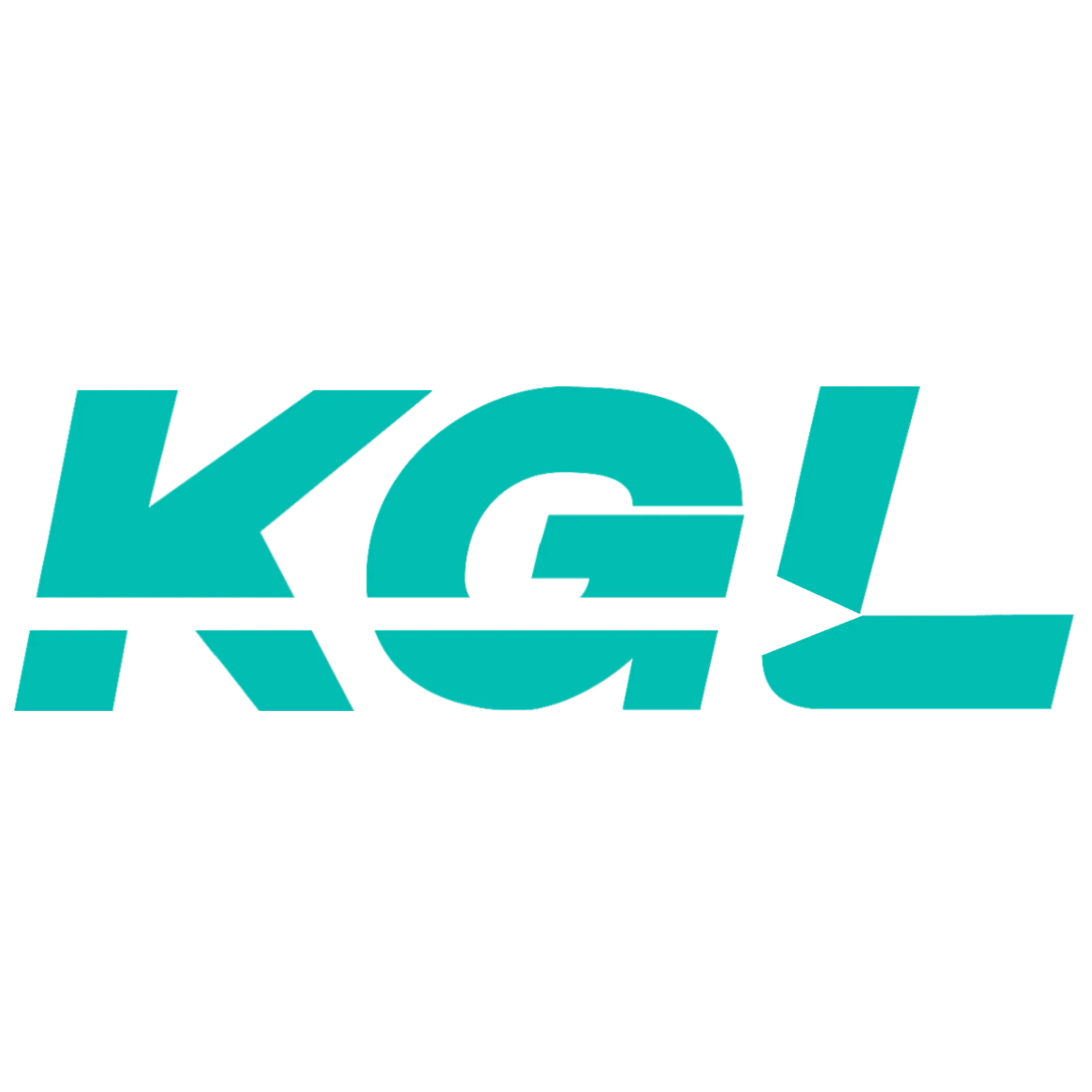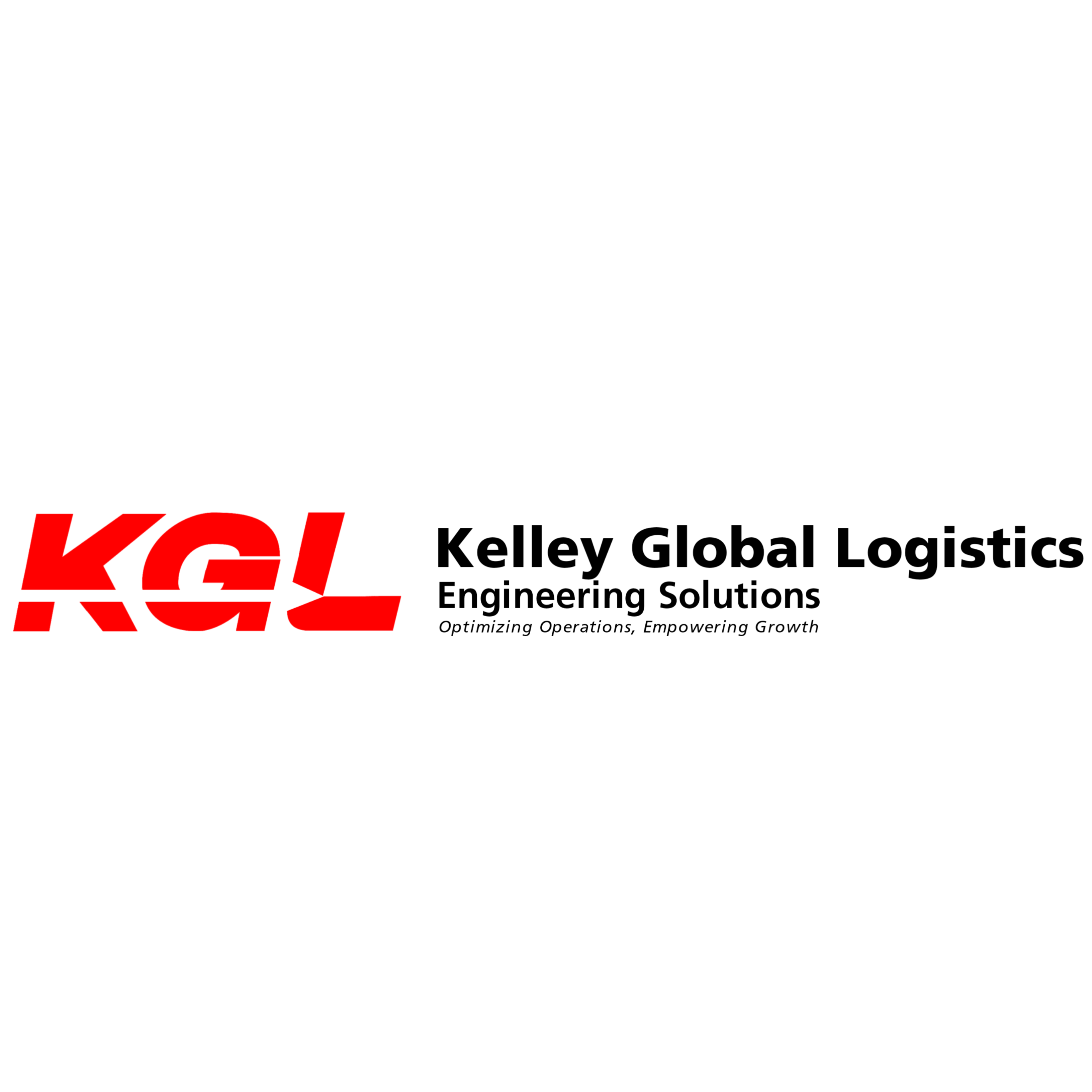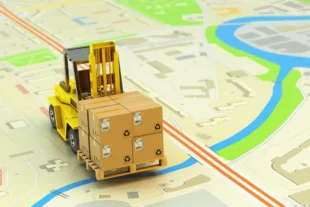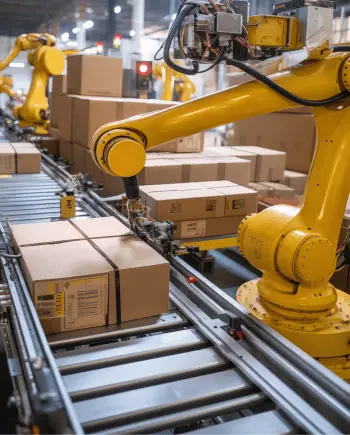In today’s hyper-connected global economy, the logistics and supply chain industry is the lifeblood of economic stability and growth. From the smooth flow of goods to the integration of cutting-edge technology, this sector is rapidly evolving, driven by globalization, digitization, and the demands of an increasingly dynamic marketplace. As industry professionals, especially business-to-business (B2B) leaders, understanding technical logistics and supply chain terminologies is essential for staying competitive and informed.
The ability to understand and integrate the language of supply chains determines the efficiency and competitiveness of your operation.
Marc Engel, Chief Supply Chain Officer at Unilever, notes:
“A future-ready supply chain requires not just tools and processes, but a fundamental understanding of the ecosystem’s vocabulary. Every term represents a building block of innovation and efficiency.”
Technical Logistics and Supply Chain Terminologies
This guide categorizes and explains the top 80 technical logistics and supply chain terminologies critical for professionals across industries.
Logistics and Supply Chain Terminologies
Supply Chain
Supply chain refers to the entire network of entities involved in producing and delivering a product, from raw materials to the final consumer.
Logistics
Logistics focuses on the efficient transportation and storage of goods within the supply chain.
Logistics as a Service (LaaS)
Logistics as a Service (LaaS) is a managed transportation service that uses a team of logistics experts to move shipments at the best cost and speed. LaaS can help businesses save time, reduce costs, and improve customer service.
Inventory Management
Inventory management involves overseeing the storage, usage, and ordering of inventory.
Procurement
Procurement is the process of sourcing and acquiring goods and services from suppliers.
Reverse Logistics:
Reverse logistics pertains to the movement of goods from the end user back to the manufacturer or seller, often for returns or recycling.
Cold Chain Logistics
Cold logistics is specialized supply chains designed for the storage and transportation of temperature-sensitive products like vaccines or perishables.
Cross-Docking
Cross-docking is the process where goods are unloaded from inbound vehicles and directly loaded onto outbound ones, minimizing storage time.
Warehousing
Warehousing refers to the storage of goods in a facility for safekeeping, inventory management, and distribution purposes.
Freight Forwarding
Freight forwarding is the service provided by companies that arrange the transportation of goods on behalf of shippers, including customs clearance and documentation.
Third-Party Logistics (3PL)
Third-Party Logistics refers to outsourced logistics services covering transportation, warehousing, and distribution.
Fourth-Party Logistics (4PL)
Fourth-Party Logistics is strategic partnership where a company manages all aspects of the supply chain, often using multiple 3PLs.
Bill of Lading (BOL)
Bill of Load is a legal document issued by a carrier to acknowledge receipt of cargo for shipment, detailing the goods and transport terms.
Freight Charge
Freight charge is the cost incurred for transporting goods via truck, ship, rail, or air.
Intermodal Transport
Intermodal transport is the use of multiple modes of transportation (e.g., rail, ship, truck) to move goods in a single container.
Full Truckload (FTL)
Full Truckload is a shipping mode where the entire truck is filled with goods from one shipper.
Less Than Truckload (LTL)
Less Than Truckload (LTL) is a shipping mode where multiple shippers share space in a single truck to reduce costs.
Shipping Manifest
A shipping manifest is a detailed list of cargo or goods being transported, often used for customs or verification.
First-Mile Delivery
First-mile delivery is the initial stage of the logistics process, where products are transported from a manufacturer or supplier to a warehouse or distribution center. It’s the starting point of a product’s journey to the end customer.
Middle-Mile Delivery
Middle-mile delivery is a part of a supply chain that moves goods from the port to the warehouse or distribution center. It is also known as local distribution.
Last-Mile Delivery
Last-mile delivery is the final step of the delivery process, where goods are transported from a distribution center to the end customer.
Order Fulfillment Cycle Time
Order fulfillment cycle time is the time taken from receiving an order to delivering it to the customer.
On-Time Delivery (OTD)
On-Time Delivery (OTD) is a metric indicating the percentage of orders delivered within the agreed time frame.
Fill Rate
Fill rate is the percentage of customer orders fulfilled from available stock without backorders or delays.
Inventory Turnover Ratio
Inventory turnover ratio is a measure of how often inventory is sold or used in a specific period.
Lead Time
Lead time is the total time taken to complete a supply chain process, from placing an order to its delivery.
Perfect Order Index
Perfect order index is a measure of flawless order fulfillment, including timeliness, accuracy, and completeness.
Total Logistics Cost
Total logistics cost is the sum of all costs associated with logistics, including transportation, warehousing, and inventory management.
Resilient Supply Chain
Resilient logistics is a system designed to adapt and recover quickly from disruptions, such as natural disasters or economic shifts.
Green Logistics
Green logistics is sustainable practices in logistics to reduce environmental impact, such as using electric vehicles or optimizing delivery routes.
Carbon Footprint
Carbon footprint is the total greenhouse gas emissions from supply chain activities. Reducing this is a priority for many B2B leaders.
Circular Economy
Circular economy is a model emphasizing the reuse, repair, and recycling of materials to reduce waste.
Logistics and Supply Chain Software Terminologies
Transportation Management System (TMS)
Transportation Management System (TMS) is a software solution that helps businesses plan, execute, and optimize the movement of goods. It streamlines freight management, route optimization, and carrier selection.
Warehouse Management System (WMS)
Warehouse Management Software is designed to manage warehouse operations, including inventory tracking, order picking, and shipping. It ensures efficient storage and retrieval processes.
Enterprise Resource Planning (ERP)
Enterprise Resources Planning is a software platform that integrates core business processes, including supply chain, finance, and procurement, into a single system for better coordination and visibility.
Supply Chain Management Software (SCMS)
Supply Chain Management Software is a comprehensive tool for managing end-to-end supply chain processes such as procurement, production, and distribution.
Freight Audit and Payment Software
Freight Audit and Payment Software automates the process of validating freight invoices, ensuring accurate billing, and facilitating payment processes.
Order Management System (OMS)
Order Management System is a software that tracks orders from placement to delivery, ensuring efficient order processing and customer satisfaction.
Inventory Management Software
Inventory Management Software is a tool that monitors stock levels, predicts inventory needs, and prevents overstocking or stockouts.
Advanced Planning and Scheduling (APS)
Advance Planning and Scheduling (APS) is a software that helps businesses optimize production and logistics schedules based on demand forecasts and resource availability.
Demand Planning Software
Demand planning software provides predictive analytics to anticipate future customer demand, helping businesses align production and inventory strategies.
Fleet Management Software
Fleet management software tracks and manages vehicle fleets, ensuring optimal route planning, maintenance, and compliance.
E-Procurement Software
E-Procurement software automates purchasing processes, supplier management, and contract compliance for efficient procurement operations.
Multi-Echelon Inventory Optimization
Multi-echelon inventory optimization coordinates inventory across multiple supply chain levels.
Vendor Management System (VMS)
Vendor Management System is a tool to oversee supplier relationships, evaluate performance, and ensure contract adherence.
Reverse Logistics Software
Reverse logistics software manages the return, repair, or recycling of goods, streamlining processes for recalls or product returns.
Transportation Optimization Software
Transportation optimization software uses algorithms to identify the most cost-effective and time-efficient shipping routes and modes.
Risk Management Software
Risk management software identifies, assesses, and mitigates supply chain risks, providing real-time alerts for potential disruptions.
Blockchain Platforms
Blockchain platforms enable secure, transparent tracking of transactions and goods across the supply chain, ensuring authenticity and traceability.
Internet of Things (IoT) Platforms
Internet of Things (IoT) platforms is a software that integrates IoT devices, providing real-time data on inventory, shipping, and equipment status.
Control Tower Software
Control tower software provides end-to-end visibility across the supply chain, enabling proactive decision-making.
Sustainability Management Software
Sustainability management software tracks carbon footprints, optimizes resource usage, and ensures compliance with environmental standards in supply chain operations.
Trade Compliance Software
Trade compliant software automates import/export compliance, ensuring adherence to international trade regulations and reducing penalties.
Industry 4.0 Terminologies
Industry 4.0
Industry 4.0, also known as the Fourth Industrial Revolution, is the integration of digital technologies into manufacturing and industrial processes. It involves the use of smart technologies and automation to make manufacturing more efficient, quick, cheap, and sustainable.
Internet of Things (IoT)
Internet of Things (IoT) utilizes interconnected devices to collect and exchange real-time data within the supply chain. For example, IoT sensors in trucks monitor cargo temperature.
Artificial Intelligence (AI)
Artificial Intelligence (AI) enables data-driven decision-making, such as route optimization or inventory forecasting.
Blockchain
Blockchain ensures transparency and traceability in the supply chain by maintaining immutable records of transactions.
Additive Manufacturing (3D Printing)
Additive manufacturing (also known as “3D printing”) simplifies the supply chains by allowing for the creation of goods closer to demand points. It is the opposite of subtractive manufacturing, which creates an object by cutting away at a solid block of material until the final product is created. Additive manufacturing significantly curbs the production of waste.
Digital Twin
A digital Twin is a virtual replica of a physical supply chain system, allowing simulation and optimization of operations.
Autonomous Vehicles
Autonomous vehicles are self-driving trucks and drones transforming logistics with increased efficiency and reduced labor costs.
Automated Guided Vehicles (AGVs)
Automated Guided Vehicles (AGVs) are robots that move goods in warehouses using pre-defined paths and sensors.
Green Logistics
Green logistics focuses on reducing the environmental impact of supply chain activities through sustainable practices, such as using renewable energy in warehouses.
Big Data Analytics
Big data analytics is the analysis of large datasets to uncover patterns and insights, aiding in decision-making and process optimization.
Augmented Reality (AR)
Augmented Reality is a technology that overlays digital information in a real-world environment, used in warehouse navigation or training.
Cloud Computing
Cloud computing is Internet-based computing services that enable real-time collaboration and data sharing across the supply chain.
Cyber-Physical Systems (CPS)
Cyber-Physical Systems (CPS) are integrated systems combining physical components with digital technologies to monitor and control logistics operations.
Collaborative Robots (Cobots)
Collaborative Robots (Cobots) are robots designed to work alongside humans in logistics and warehouse settings.
Smart Sensors
Smart sensors are devices that collect real-time data on environmental conditions, such as temperature or humidity, during transportation.
Robotic Process Automation (RPA)
Robotic Process Automation (RPA) are software automation tools that handle repetitive tasks, such as order processing or inventory updates.
Smart Contracts
Smart contracts are digital contracts executed automatically when predetermined conditions are met, enhancing transparency in supply chains.
Predictive Maintenance
Predictive maintenance means using data analytics to forecast when equipment will fail and scheduling maintenance proactively.
Real-Time Tracking
Real-Time tracking refers to the practice of using software systems that provide live updates on the location and status of goods in transit.
Demand Forecasting
Demand forecasting is using historical data and analytics to predict future customer demand for better inventory planning.
Omnichannel Logistics
Omnichannel logistics refers to the integration of various sales channels (online, in-store) into a single, cohesive supply chain.
Hyperloop Technology
Hyperloop technology are high-speed transportation systems using low-pressure tubes for rapid delivery of goods.
Energy Optimization Systems
Energy optimization systems are technologies that improve energy efficiency in supply chain operations, such as in warehouses or transport vehicles.
Quantum Computing
Quantum computing enhances supply chain optimization and decision-making by creating complex analytic models that can identify the most efficient and cost-effective routes for logistics and routing.
Edge Computing
Edge computing processes data closer to its source for faster decisions. It can be used in supply chains to improve efficiency and reliability.
Digital Identity Systems
Digital identity systems verifies the authenticity of people, goods and suppliers involved in the supply chain process.
Voice-Activated Technology
Voice-Activated Technology (also known as “Voice-directed warehousing – VDW) is a human-machine interaction system that streamlines warehouse operations through voice commands. For example, it can be used to guide warehouse operators to the right locations around the warehouse and what products to pick to meet customer orders.
Cybersecurity Solutions
Cybersecurity solutions refers to software technologies that protect supply chain data from cyber threats.
Conclusion
The technical logistics and supply chain terminologies discussed in this guide represent the building blocks of modern supply chain strategies, innovation, and operational excellence. For B2B leaders in the supply chain industry, mastering these terminologies is a strategic necessity.
In a field as dynamic as logistics and supply chain management, continuous learning is essential. Leaders must not only stay updated with emerging terms and technologies but also foster a culture of innovation and collaboration within their organizations.
P.S. This article will be updated as new terms are added to the supply chain vocabulary.













